- Home
- Tom Clancy
Special Forces: A Guided Tour of U.S. Army Special Forces Page 43
Special Forces: A Guided Tour of U.S. Army Special Forces Read online
Page 43
No one had an answer, but we could make a likely guess: Hours late, exhausted, probably hassled by his own battalion commander (who was present and probably wondering why he was being bothered with this exercise in the first place), he simply decided to blow off the plan and take the objective in the most direct and quick way possible. It seems that intercommunity friction between the Rangers and Special Forces had again flared up, and the Ranger commander had been more interested in getting the assault over with than following orders from an SF commander.
And now Task Force Sparrow was an hour late, as a result of a navigation error by a lead vehicle in one of the convoys. Another lesson learned: Even satellite-based GPS receivers and perfect maps cannot overcome the mistakes of tired men with too much to do.
Because they were late, when Sparrow arrived their handoff with the Rangers was rushed, and went off poorly. Not only were the MC-130s due very soon on the dirt exfiltration field north of DZ Burma, but the Ranger company commander would rather leave than stay and explain how things had gone to Lieutenant Colonel Adams and Major Sparrow.
I can only imagine how frustrating these situations must have been for Colonel Phillips and the JSOTF staff back in the Battlestar center, who had followed the entire evolution of the exercise via the satellite communications links. They must have felt like the war gods had abandoned them.
Still, R3 had a long way to go. There would be almost another week of sustainment operations in Merrill Village, more than enough time to find out whether Battlestar could control two widely separated SOF missions at the same time.
But now it was time for me to call it a day. I had been up for almost twenty-four hours and needed rest.
Fort Polk Live-Fire Range, Louisiana, March 8th
By Monday morning the storm had moved off, and the day was clear and pleasant, a perfect day to head back up to Peason Ridge to watch the Merrill Village IDPs return home. Today I would ride up with Major “Fitz” Fitzgerald, another of the SOTD O/Cs I’d worked with in JRTC 99-1.
We drove up to a small clearing south of the village, where the rest of the O/Cs had parked their vehicles, and then walked past the checkpoint erected the previous day and into the village.
Overnight, the 1st/7th SFG and the Bolivian infantry had set up a tent camp just south of the village. They had closed up the obstacles and wire left behind by the OpFor, and now the whole village could be patrolled and secured. Major Sparrow had MP patrols (supported by UH-60 Blackhawk helicopters from the Kentucky National Guard) hunting for the escaped OpFor unit. (The Blackhawks had been provided to 1st/7th SFG after the 160th SOAR proved unable to support both the Eglin and Fort Polk R3 operations.) Clearly, the major was trying hard to make good the shortcomings of the previous day. He had a tight compound, a “big dog” presence outside the wire, and was ready for the next part of the operation: the repatriation of the Merrill Village IDPs.
The IDP convoy—four trucks to haul the villagers and their belongings—was surrounded by a phalanx of armed HMMWVs and had an overwatch escort of two Kentucky National Guard UH-60s. Along with the escort came a civil affairs detachment, which would run the repatriation effort in Merrill Village.
The convoy of internally displaced personnel (refugees) return to their simulated home at Merrill Village during R3. R3 not only simulated combat operations, but also peacekeeping and counterproliferation missions.
JOHN D. GRESHAM
With the help of the Battlestar center, Lieutenant Colonel Adams had carefully coordinated the movement of the convoy from the north side of Fort Polk to Peason Ridge with all the other elements involved. The convoy was kept in constant contact with the FOB at Fort Polk and Task Force Sparrow at Merrill Village. Today everything ran perfectly, and the IDPs arrived promptly at 1000 hours.
As the convoy passed through the checkpoint, I was joined by Major Tom McCollum who was now playing the part of the 1st/7th PAO. Along with the CA mission, USASOC was trying out a number of new ideas and technologies for their “Media on the Battlefield” program, and Tom was here to apply them.
When the convoy pulled up to a stop in the village square, soldiers from the security force helped some two dozen IDPs down and escorted them over to the gazebo at the center of the square, where they all sat to listen to the head of the civil affairs detachment (a female captain in the Army reserve) welcome them back to their homes. “Things are still a little rough,” she told them, “and some of your homes have not yet been cleared of booby traps or mines that may have been left behind. So please be patient.
“I also hope,” she went on, “that you’ll understand the soldiers protecting the village might not always understand you or appreciate your customs. But please be aware that they’ll do their best. And also be aware that Americans ‘died’ to free your village from the ’insurgents.‘ ”
Her words didn’t go over all that well with the IDP roleplayers. Already they were growing restless (they were a fractious lot): Some were unhappy that their homes were not yet cleared for moving in. Others were unhappy that Bolivian soldiers of the security force had dug a machine gun position in the middle of their livestock corral. And the next day, Major Fitzgerald explained, there would be a preplanned (but unknown to the SF players) civil disobedience incident.
I had no doubt that Major Sparrow’s troops had their work cut out for them.
Fort Polk Live-Fire Range, Louisiana, March 9th
Once again, I rode up to Peason Ridge with Major Fitzgerald. It was another fine winter day.
A simulated riot breaks out in Merrill Village between contractor roleplayers. Such events provided R3 leaders a chance to deal with fast-breaking situations to test their new command-and-control systems. JOHN D. GRESHAM
Our plan was to discreetly enter the village, and be there when the preplanned “incident” took place (around noon). The idea was to stress the security and civil affairs teams, and see how they reacted to a fast-breaking crisis. While all the TRW contractor roleplayers and O/Cs were aware it was coming, the American and Bolivian soldiers had no clue.
When we arrived, the Americans and Bolivians were constructing a new clinic between the chateau and the church, and were focused on their work. We chose to wait out the situation on the second floor terrace of the chateau. Meanwhile, Tom McCollum, who’d sensed that something was up, had joined us with a loaded camera. Tom’s an old SF team leader, and has a nose for such things; he was ready when trouble broke out.
Around noon, several trucks and vans full of people unexpectedly arrived at the compound security gate—“civilians” from another town seeking refuge from the insurgents until U.S. and Cortinian forces could resecure their town. They were admitted and directed into the village square.
Here things got messy. The Merrill villagers did not at all like sharing their village and its limited resources with the new IDPs (the two villages were rivals), and a small riot broke out.
After a time, local constables and the SF security detachment separated the two groups and called in the civil affairs team to sort things out. The Merrill villagers were moved to the gazebo, while the new IDPs were sent to an open area near the church, where a large tent was erected to provide shelter, and MREs and water were sent over.
Several hours of back and forth negotiations followed.
In a remarkably short time, thanks to the well-organized communications links, a Cortinian government official arrived and settled things down. Schedules were worked out for sharing facilities like cooking, bathing, and the church (for worship services). And because of the robust computer network linkages (in this case via satellite communications link), extra supplies, tents, and other necessary items were delivered via truck and helicopter in just a matter of hours.
In other words, properly employed, Colonel Phillips’s Battlestar computers and communications links had made a difference in a fast-breaking situation in the field.
Other potentially messy situations over the next days were handled with similar dispatch.
&n
bsp; Meanwhile, over at Eglin AFB things had also gone well (and bear in mind, this very complex operation was run in parallel with the Fort Polk mission): After a SCUD hunt of several days, the combat portion of the mission had climaxed with a nighttime raid on a missile depot. Aided by Terminal Guidance by 20th SFG teams on the ground, Air Force AC-130s had destroyed the missiles in their storage areas.
I went home convinced. In spite of the Ranger fiasco, and some ordinary mistakes (shit happens), the Battlestar concept of controlling SOF operations has demonstrated its ability to handle wartime data/communications loads ... and to do that from the get-go: The effect of the better comms and computer power started at the COA briefing. They gave Phillips and his commanders more and better options, and went a long way toward eliminating stovepiping. During the exercise, they handled a pace and flow of data that no normal SF command center could have handled. Changes were accommodated and problems were resolved faster than ever before.
Battlestar works ... to the degree that information can influence events. Even so, broader questions arise: More than a few SF soldiers, while impressed with the SF Battlestar concept, are concerned about misuse of the technology. They’ve seen too many commanders who are tempted to overcontrol. Micromanaging comes easy. I’ll repeat: Good commanders trust their subordinates (and help them learn from their mistakes). Bad commanders micromanage. A few older hands remember when SF commanders used to ride around in helicopters and call down instructions to troops on the ground below. A very bad idea.
Today, with UAVs, satellites, and other imaging platforms, the potential for micromanaging exists on an even larger scale. A group commander or general at Fort Bragg could give orders in real time to SF soldiers on the other side of the world. Commanders will have to fight hard the temptations that capability offers.
Another question is more subtle: A command center that’s thousands of miles from the action is thousands of miles from the risks and the dangers the guys in action are facing. Situational awareness and improved comms and improved flow are all good. But there’s also a counterargument: The absence of stress and intensity and the “feel” for the action that comes from being near the battle might well hurt the performance of commanders. Which setup will work better? The answer remains very much open.
On a more positive note, the prototype Battlestar equipment exists today, ready to be deployed, if needed, in support of an overseas contingency. Given the current pace of SF operations, I would be surprised if that did not happen very soon.
Meanwhile ...
• In Thailand and Laos, 1st SFG continues to remove mines, and in the Philippines to run force-on-force training exercises.
• 3rd SFG continues to train African troops as part of the ACRI program.
• 5th SFG continues its liaison operations with the Kuwaiti military.
• 7th SFG continues its counternarcotics and counterterrorist efforts in Colombia.
• 10th SFG continues its ongoing peacekeeping efforts in Bosnia and Kosovo.
• 19th SFG continues its efforts in South Korea and Southeast Asia.
• 20th SFG continues its work in Central America.
These are only fractions of the whole. The work goes on and on ...
Operation Merdeka
“Merdeka” is Indonesian for “freedom.” For Indonesians, as with all people, freedom is more than a value in itself, it also implies truth, justice, dignity, the absence of oppression, and a good life for oneself and one’s family. For many people, Indonesians among them, these values understandably carry a sacred force. And this was especially the case in Indonesia during the heady years following the expulsion of their Dutch colonial masters, the years of the Sukarno presidency—years of grandiose, highly visible, and expensive “projects” and little economic or political progress. The word merdeka was a mantra with Sukarno. The national holiday, their Fourth of July, is called Merdeka Day. And Sukarno named his most grandiose projects and monuments “Merdeka This” or “Merdeka That.” Thus, in Jakarta there is a Merdeka Square (on one side is the U.S. Embassy; on the other, the Presidential Palace) and a Merdeka Stadium. All over Indonesia, there are Merdeka parks and Merdeka bus terminals. For a time merdeka was a greeting, like “salaam,” or “shalom.”
Over the years, tens of thousands of Indonesians have died fighting for merdeka. And tens of thousands more have been murdered or massacred because they were thought to threaten it—Chinese, who had lived in the country for generations, because it was believed they had undeservedly taken wealth from the native born; Christians because they were not Muslims; Muslims because they were not Christians.
What did these losses gain? Not a lot over the years. Though there have been the trappings of democracy—president, cabinet ministers, and parliament, the Army has by and large run the country from behind the scenes. Instead of a government of, by, and for the people, it has been largely a government of, by, and for the Army. Outlying provinces have been operated as private fiefs by Army generals, for their own benefit. Many officers and soldiers hold murder and looting to be their legal right. The more thuggish and murderous of local militias (gangs used to put down opposition to the government, i.e., to the Army) have been supported and supplied by the Army. And in places like East Timor, the Army has been a force of anarchy and destruction rather than order and justice.
The Army has in fact a legal “justification” for its power position in the state. It was specifically charged by the Indonesian constitution to protect, guard, and nurture the nation. Army generals took that to mean they were licensed to run things the way they wanted. Some folks get more merdeka than others (as George Orwell observed in another context).
In the mid ‘60s, the corrupt but charismatic Sukarno was replaced by the corrupt but uncharismatic Suharto (an army major general before assuming the presidency) and a clique of equally corrupt cronies. Suharto brought greater order, and a measure of economic progress, but this was more than offset by his and his cronies’ looting. They stole more wealth than they created—billions of dollars. Then they parked it offshore, where it would do the nation no good.
Indonesians are a volatile people, for whom rioting is an art form. In 1998, Suharto was driven out of office after weeks of increasingly violent riots. He was replaced by a friend and crony, Dr. B. J. Habibie, a technocrat of the most shallow kind, and a lover of extravagant and grandiose high-tech projects. Habibie was a joke, but his presidency was blessedly short-lived. He was replaced—democratically—by President Abdurrahman Wahid, a Muslim cleric, and by all accounts a man of integrity. His mandate was to reform the government (read for that defang the Army). As of this writing (early in 2000), he has made a brave start toward that goal ... but it is a difficult and perilous journey, and Wahid’s fragile health may not stand up to the hard job ahead.
What does all this say about merdeka?
It has yet to be realized for the two hundred million citizens of what could be the world’s third largest democracy. Yet there is hope ... and reason to fear.
2005
During his years in office, President Wahid had some modest successes, yet he failed to make Indonesia work. His body was simply not up to the strain ... though it is arguable that no body could handle that much strain. He faced—and failed to solve—two intractable problems:
First, the Balkanization of the military.
It actually makes sense that a nation of thousands of islands provide itself with an effective navy and air force to provide protection against Indonesia’s few external enemies (smuggling and piracy are greater threats than invasions). Conversely, a large army is not required (though a small, highly trained, and quick-moving strike force could come in handy).
Wahid managed to diminish the power of the army by getting rid of some of the more flagrant Neanderthals, thieves, and murderers within the officer corps, by starving it of money, and by playing factions against one another. At the same time, he funneled greater funds into the Navy and Air Force, and gave
plum jobs to the relatively more honest and trustworthy, and better educated, Navy and Air Force officers. All of this did not, of course, sit well with the old-line Army officers who survived Wahid’s assaults. They missed the constitutional perks that made them the guardians and “nurturers” of the nation, and they missed even more their easy access to the nation’s money teats.
Second, the Balkanization of the country.
By 2004, Aceh (on the northwest comer of Sumatra) and Irian Jaya (western new Guinea) had become virtually independent, while sectarian fighting in the Moluccas (once the Spice Islands, now called Maluku by the Indonesians) had seen the killing of thousands and the destruction of much of the islands’ infrastructure. By 2001, destruction by rampaging militias (Christian and Muslim) had devastated the provincial capital of Kota Ambon (Ambon City) on Palau Ambon (Ambon Island). There was scarcely a building untouched by gunshot or crude, homemade bombs. Tens of thousands of people tried to find shelter in the burned out, roofless buildings that had once been their homes. The militias destroyed water, power, transport, communications, hospitals, and schools. In 2002 the Army, abdicating responsibility (while continuing to support the more violent Muslim militias), abandoned the province to the mobs.
The Moluccas are not a chain. They are simply those islands in the Indonesian archipelago that lie scattered between the larger islands, Sulawesi and New Guinea, on a roughly north-south line. Because they were once the jewels of the Dutch empire and the prime source of Holland’s spice wealth (in 1492, Columbus was headed in their direction), Dutch influence is heavy, and the islands had at one time a Christian majority (they were probably the most Christian area of Indonesia). But by the turn of the millennium, an ever growing influx of Muslims had made Christians a minority (though a large and powerful one).

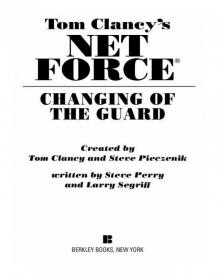 Changing of the Guard
Changing of the Guard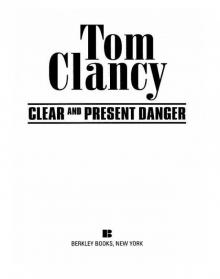 Clear and Present Danger
Clear and Present Danger Hounds of Rome
Hounds of Rome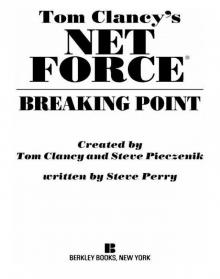 Breaking Point
Breaking Point Tom Clancy's Jack Ryan Books 7-12
Tom Clancy's Jack Ryan Books 7-12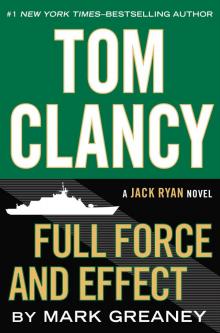 Full Force and Effect
Full Force and Effect The Archimedes Effect
The Archimedes Effect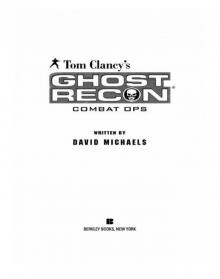 Combat Ops
Combat Ops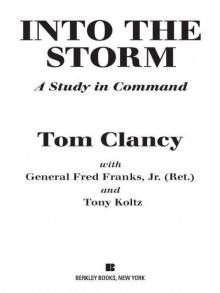 Into the Storm: On the Ground in Iraq
Into the Storm: On the Ground in Iraq Under Fire
Under Fire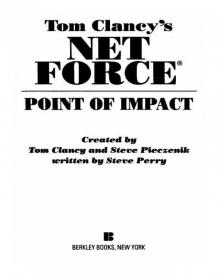 Point of Impact
Point of Impact Red Rabbit
Red Rabbit Rainbow Six
Rainbow Six The Hunt for Red October
The Hunt for Red October The Teeth of the Tiger
The Teeth of the Tiger Conviction (2009)
Conviction (2009)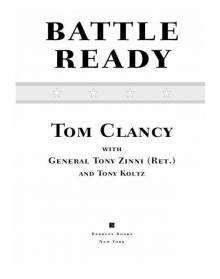 Battle Ready
Battle Ready Patriot Games
Patriot Games The Sum of All Fears
The Sum of All Fears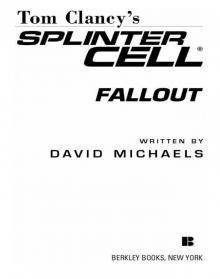 Fallout (2007)
Fallout (2007) Red Storm Rising
Red Storm Rising The Cardinal of the Kremlin
The Cardinal of the Kremlin Executive Orders
Executive Orders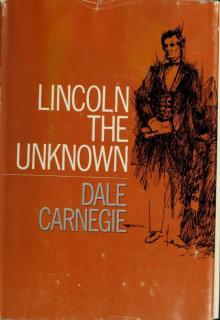 Lincoln, the unknown
Lincoln, the unknown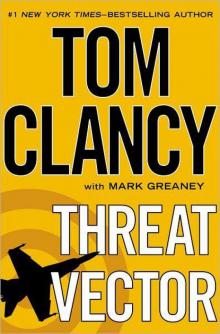 Threat Vector
Threat Vector The Hunted
The Hunted Shadow Warriors: Inside the Special Forces
Shadow Warriors: Inside the Special Forces End Game
End Game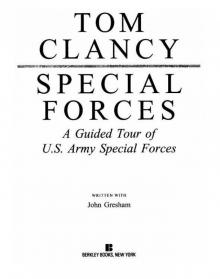 Special Forces: A Guided Tour of U.S. Army Special Forces
Special Forces: A Guided Tour of U.S. Army Special Forces Locked On
Locked On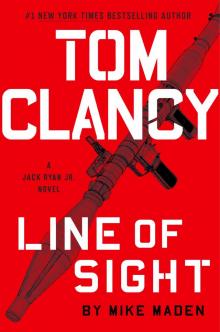 Line of Sight
Line of Sight Tom Clancy Enemy Contact - Mike Maden
Tom Clancy Enemy Contact - Mike Maden Fighter Wing: A Guided Tour of an Air Force Combat Wing
Fighter Wing: A Guided Tour of an Air Force Combat Wing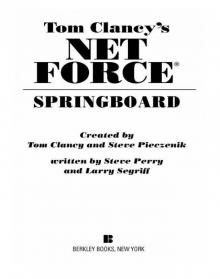 Springboard
Springboard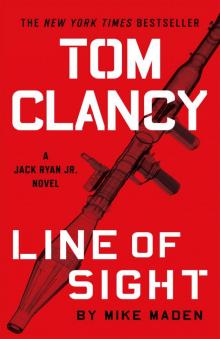 Line of Sight - Mike Maden
Line of Sight - Mike Maden EndWar
EndWar Dead or Alive
Dead or Alive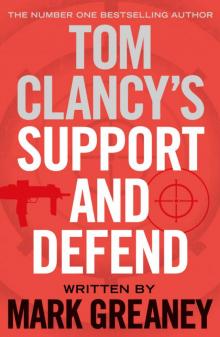 Tom Clancy Support and Defend
Tom Clancy Support and Defend Checkmate
Checkmate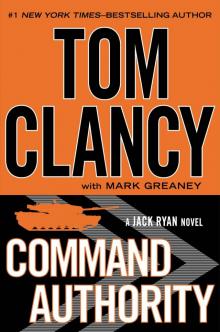 Command Authority
Command Authority Carrier: A Guided Tour of an Aircraft Carrier
Carrier: A Guided Tour of an Aircraft Carrier Blacklist Aftermath
Blacklist Aftermath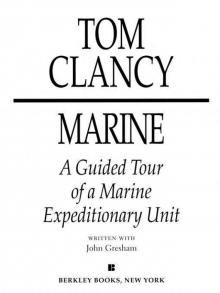 Marine: A Guided Tour of a Marine Expeditionary Unit
Marine: A Guided Tour of a Marine Expeditionary Unit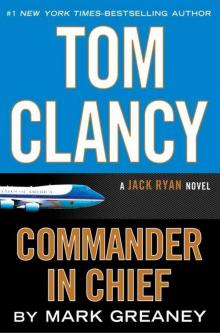 Commander-In-Chief
Commander-In-Chief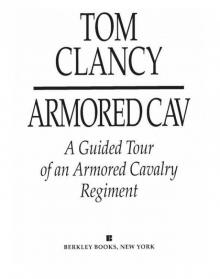 Armored Cav: A Guided Tour of an Armored Cavalry Regiment
Armored Cav: A Guided Tour of an Armored Cavalry Regiment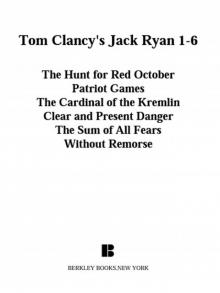 Tom Clancy's Jack Ryan Books 1-6
Tom Clancy's Jack Ryan Books 1-6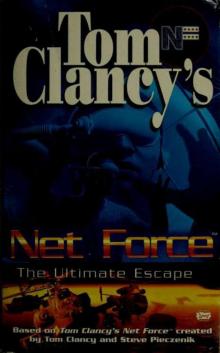 The Ultimate Escape
The Ultimate Escape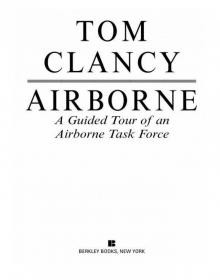 Airborne: A Guided Tour of an Airborne Task Force
Airborne: A Guided Tour of an Airborne Task Force Debt of Honor
Debt of Honor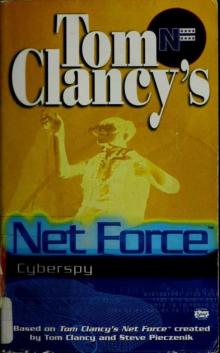 Cyberspy
Cyberspy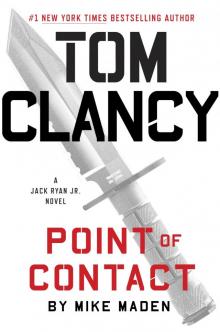 Point of Contact
Point of Contact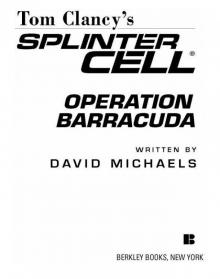 Operation Barracuda (2005)
Operation Barracuda (2005)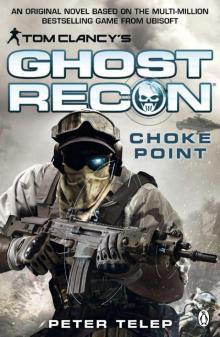 Choke Point
Choke Point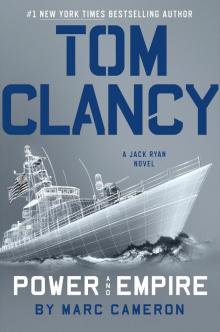 Power and Empire
Power and Empire Every Man a Tiger: The Gulf War Air Campaign
Every Man a Tiger: The Gulf War Air Campaign Endgame (1998)
Endgame (1998)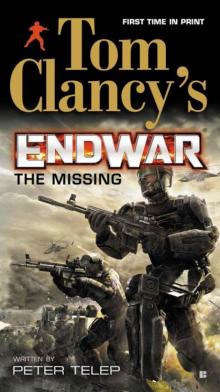 EndWar: The Missing
EndWar: The Missing Splinter Cell (2004)
Splinter Cell (2004) The Great Race
The Great Race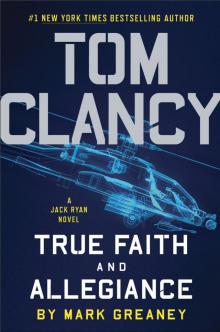 True Faith and Allegiance
True Faith and Allegiance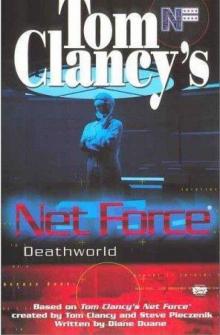 Deathworld
Deathworld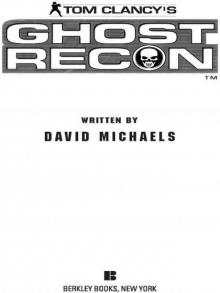 Ghost Recon (2008)
Ghost Recon (2008)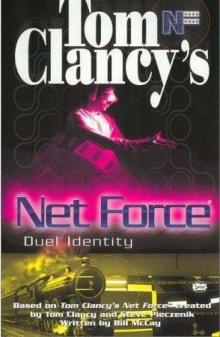 Duel Identity
Duel Identity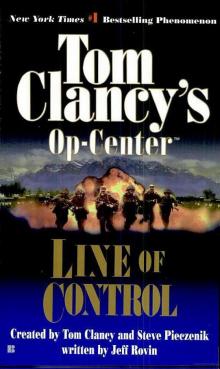 Line of Control o-8
Line of Control o-8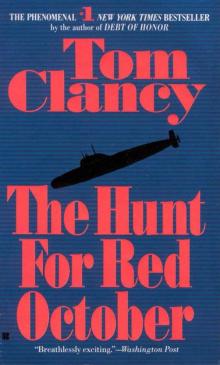 The Hunt for Red October jr-3
The Hunt for Red October jr-3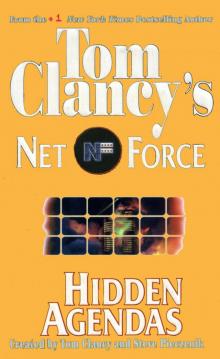 Hidden Agendas nf-2
Hidden Agendas nf-2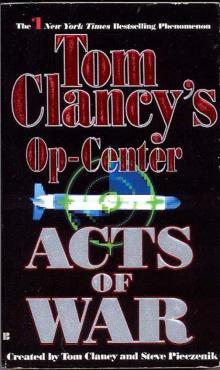 Acts of War oc-4
Acts of War oc-4 Ruthless.Com pp-2
Ruthless.Com pp-2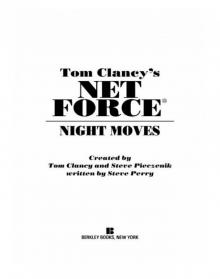 Night Moves
Night Moves The Hounds of Rome - Mystery of a Fugitive Priest
The Hounds of Rome - Mystery of a Fugitive Priest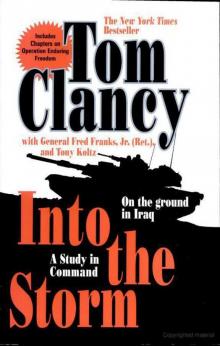 Into the Storm: On the Ground in Iraq sic-1
Into the Storm: On the Ground in Iraq sic-1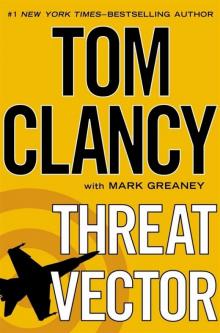 Threat Vector jrj-4
Threat Vector jrj-4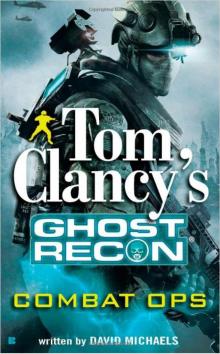 Combat Ops gr-2
Combat Ops gr-2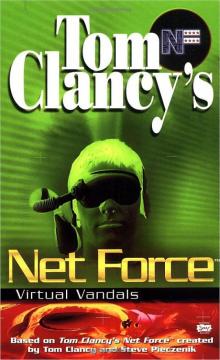 Virtual Vandals nfe-1
Virtual Vandals nfe-1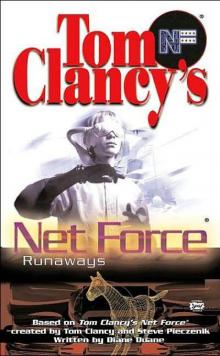 Runaways nfe-16
Runaways nfe-16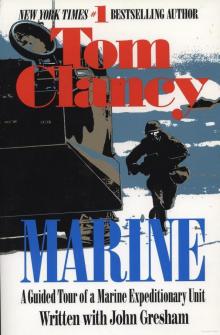 Marine: A Guided Tour of a Marine Expeditionary Unit tcml-4
Marine: A Guided Tour of a Marine Expeditionary Unit tcml-4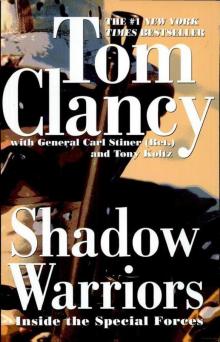 Shadow Warriors: Inside the Special Forces sic-3
Shadow Warriors: Inside the Special Forces sic-3 Jack Ryan Books 1-6
Jack Ryan Books 1-6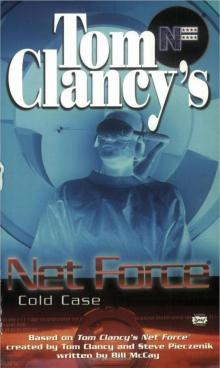 Cold Case nfe-15
Cold Case nfe-15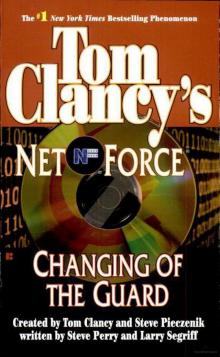 Changing of the Guard nf-8
Changing of the Guard nf-8 Splinter Cell sc-1
Splinter Cell sc-1 Battle Ready sic-4
Battle Ready sic-4 The Bear and the Dragon jrao-11
The Bear and the Dragon jrao-11 Fighter Wing: A Guided Tour of an Air Force Combat Wing tcml-3
Fighter Wing: A Guided Tour of an Air Force Combat Wing tcml-3 Patriot Games jr-1
Patriot Games jr-1 Jack Ryan Books 7-12
Jack Ryan Books 7-12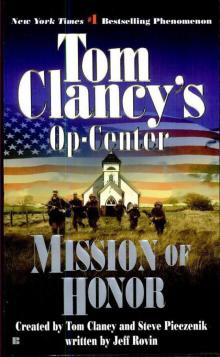 Mission of Honor o-9
Mission of Honor o-9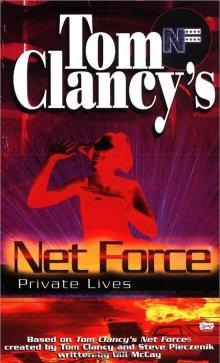 Private Lives nfe-9
Private Lives nfe-9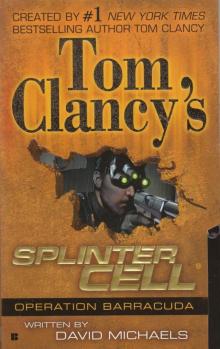 Operation Barracuda sc-2
Operation Barracuda sc-2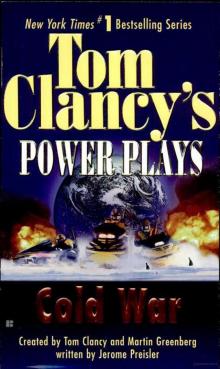 Cold War pp-5
Cold War pp-5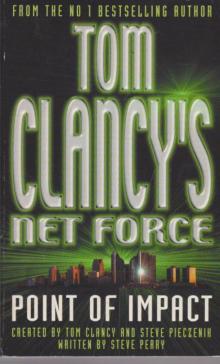 Point of Impact nf-5
Point of Impact nf-5 Red Rabbit jr-9
Red Rabbit jr-9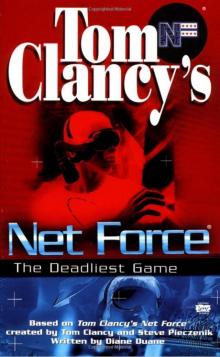 The Deadliest Game nfe-2
The Deadliest Game nfe-2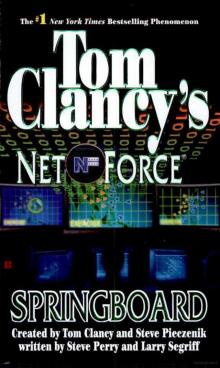 Springboard nf-9
Springboard nf-9 Safe House nfe-10
Safe House nfe-10 EndWar e-1
EndWar e-1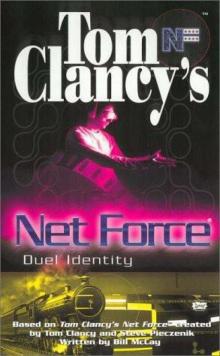 Duel Identity nfe-12
Duel Identity nfe-12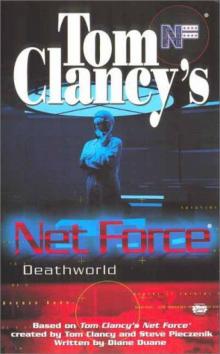 Deathworld nfe-13
Deathworld nfe-13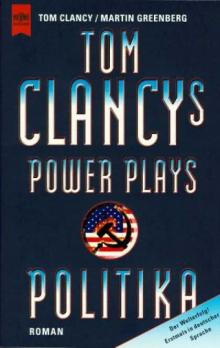 Politika pp-1
Politika pp-1 Rainbow Six jr-9
Rainbow Six jr-9 Tom Clancy's Power Plays 1 - 4
Tom Clancy's Power Plays 1 - 4 Endgame sc-6
Endgame sc-6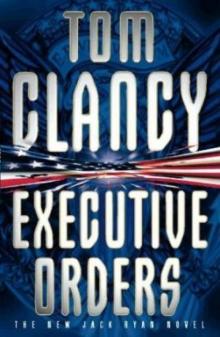 Executive Orders jr-7
Executive Orders jr-7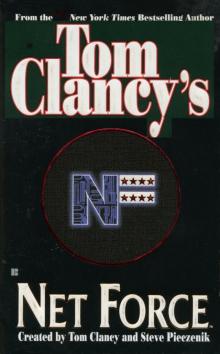 Net Force nf-1
Net Force nf-1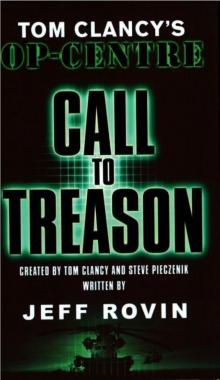 Call to Treason o-11
Call to Treason o-11 Locked On jrj-3
Locked On jrj-3 Against All Enemies
Against All Enemies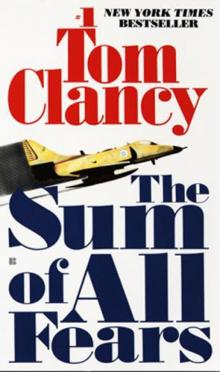 The Sum of All Fears jr-7
The Sum of All Fears jr-7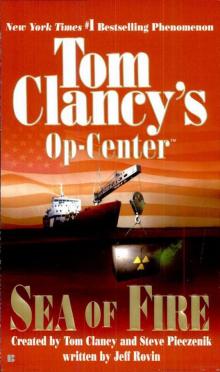 Sea of Fire o-10
Sea of Fire o-10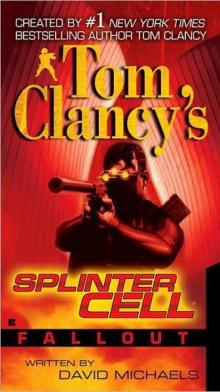 Fallout sc-4
Fallout sc-4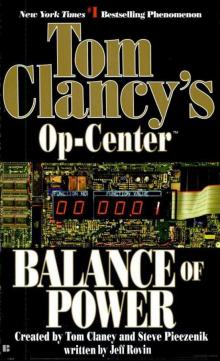 Balance of Power o-5
Balance of Power o-5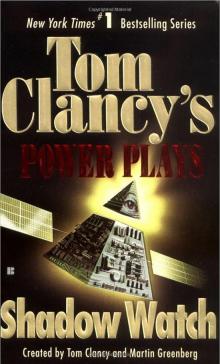 Shadow Watch pp-3
Shadow Watch pp-3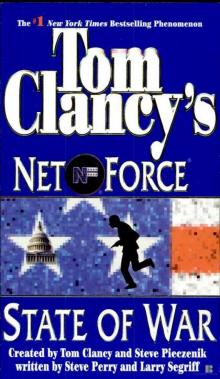 State of War nf-7
State of War nf-7 Wild Card pp-8
Wild Card pp-8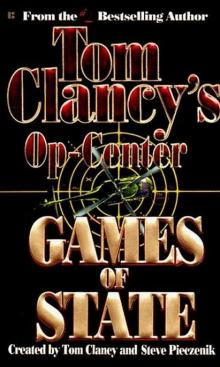 Games of State o-3
Games of State o-3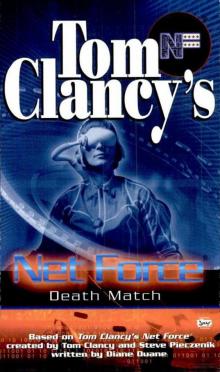 Death Match nfe-18
Death Match nfe-18 Against All Enemies mm-1
Against All Enemies mm-1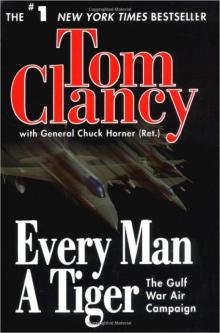 Every Man a Tiger: The Gulf War Air Campaign sic-2
Every Man a Tiger: The Gulf War Air Campaign sic-2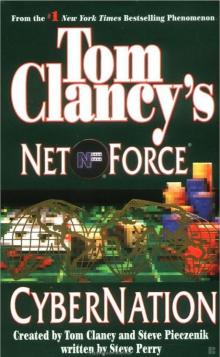 Cybernation nf-6
Cybernation nf-6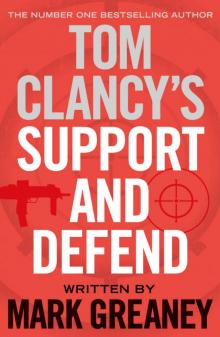 Support and Defend
Support and Defend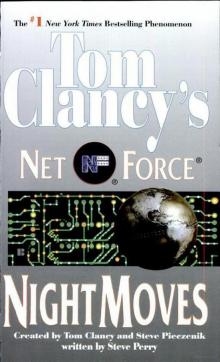 Night Moves nf-3
Night Moves nf-3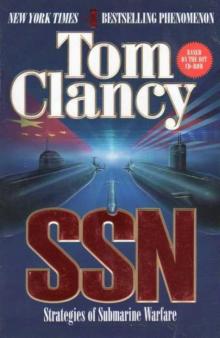 SSN
SSN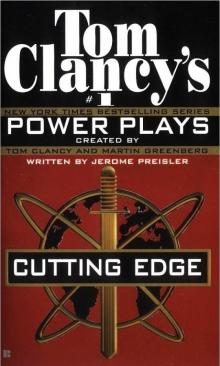 Cutting Edge pp-6
Cutting Edge pp-6 The Cardinal of the Kremlin jrao-5
The Cardinal of the Kremlin jrao-5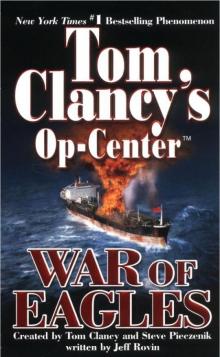 War of Eagles o-12
War of Eagles o-12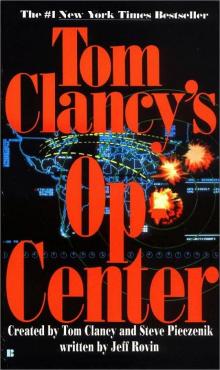 Op-Center o-1
Op-Center o-1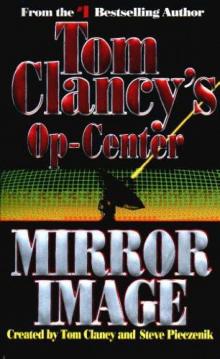 Mirror Image o-2
Mirror Image o-2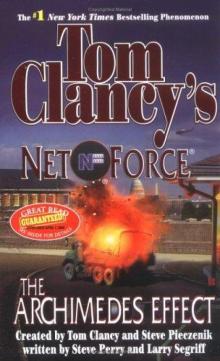 The Archimedes Effect nf-10
The Archimedes Effect nf-10 Teeth of the Tiger jrj-1
Teeth of the Tiger jrj-1 Bio-Strike pp-4
Bio-Strike pp-4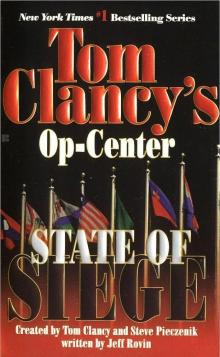 State of Siege o-6
State of Siege o-6 Debt of Honor jr-6
Debt of Honor jr-6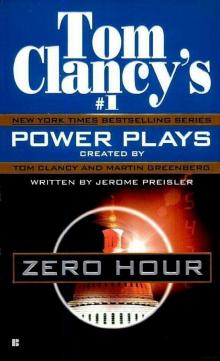 Zero Hour pp-7
Zero Hour pp-7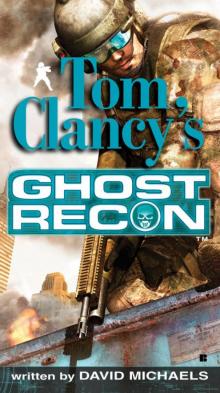 Ghost Recon gr-1
Ghost Recon gr-1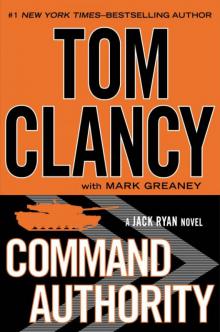 Command Authority jr-10
Command Authority jr-10 Tom Clancy's Power Plays 5 - 8
Tom Clancy's Power Plays 5 - 8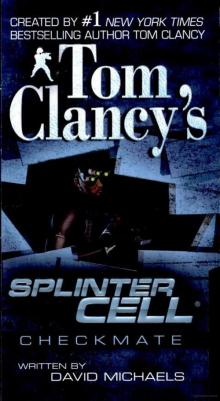 Checkmate sc-3
Checkmate sc-3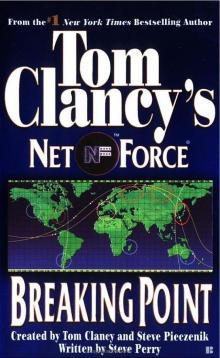 Breaking Point nf-4
Breaking Point nf-4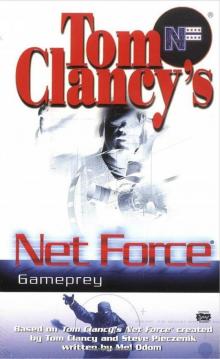 Gameprey nfe-11
Gameprey nfe-11 The Hunted e-2
The Hunted e-2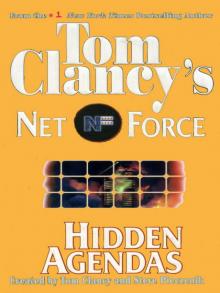 Hidden Agendas
Hidden Agendas Divide and Conquer o-7
Divide and Conquer o-7